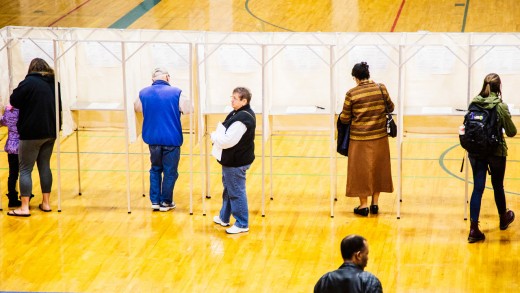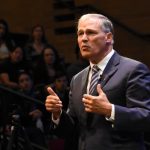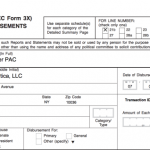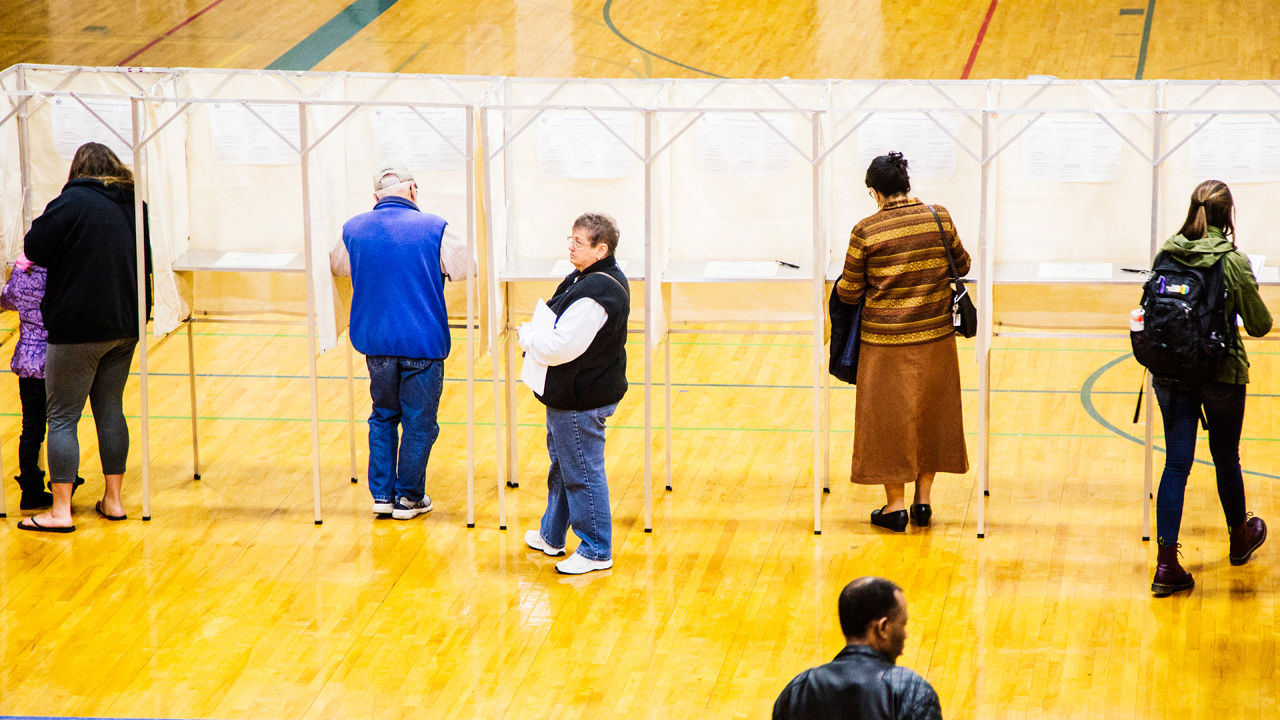here is Why Polls Are So bad At Predicting Election outcomes
One reason: From 1/2 to two-thirds of poll respondents do not in fact vote in a main.
December 16, 2015
This week again in 2011, during a heated GOP race for the presidency, the top candidate in the polls used to be Newt Gingrich. The winner of the Iowa caucus in 2012, which kicks off the primary season, was Rick Santorum (needless to say him?). four years prior to that, the leading national candidate was Rudy Giuliani and the Iowa caucus used to be clinched with the aid of Mike Huckabee.
we all bitch about polls—there are too many of them and so they dominate election protection—but one of the crucial perfect causes to brush aside them is that they are notoriously unreliable at predicting the actual results, particularly so early in the campaign.
at this time, Donald Trump dominates nationwide polls of doubtless GOP voters and Ted Cruz is prime in polls of likely GOP voters in Iowa. it’s evident to most polling specialists that such polls have no critical predictive worth—at the least no longer until a number of days closer to the actual balloting—but the media and an overabundance of political pundits announce the consequences of a large number of such polls on an almost hourly basis each day as if they have some substantive worth.
What the Polling specialists Say
We talked to polling consultants Al Tuchfarber and Cliff Zukin to provide an explanation for why such polls are so unreliable and to set the document straight on pre-presidential election survey methodologies and results. Tuchfarber is professor emeritus of political science at the university of Cincinnati and was the founder and director of the UC Institute for coverage research from 1971 to 2004. Zukin is professor of political science and public coverage, Eagleton Institute of Politics and Edward J. Bloustein faculty of Planning and coverage, Rutgers college, and prior president decide on and present member of the manager Council for the American association for Public Opinion research (AAPOR).
“These pre-election polls are demonstrably inaccurate at this time,” Tuchfarber says. “whilst you get to the last few days (pre-Iowa caucus and New Hampshire major vote casting) they’re shut but not perfect.”
“it isn’t an excellent machine from the get-go, and the role of polls in surroundings expectations is one of those things that occurs however it’s not very wholesome,” Zukin adds.
Zukin lately had a paper revealed on the AAPOR website online, titled “A Primer on Pre-election Polls: Or Why different Election Polls now and again have different results,” and Tuchfarber not too long ago authored a guest column for Sabato’s Crystal Ball—a well-liked web page out of the college of Virginia’s center for Politics that retains close tabs on presidential elections—titled “60 Days until Iowa: Are the Polls Predicting the Winners?”
Tuchfarber wrote that we will have to unquestionably no longer belief the predictive energy of both the nationwide polls or state polls at this level within the process, adding that “we will figure that in all probability anyplace from one-half to 2-thirds of the interviewed respondents in these polls won’t in truth vote in a major or caucus.”
Zukin’s primer on my own, synthesized below in brief, is a kind of laundry listing that tells us in no uncertain terms why pre-presidential election polling is more of an art than a science:
Sampling error percentages—where margin of error plus or minus X share points is stated—are deceptive for the reason that sampling error is most often higher than it may appear “and is one of the main explanation why polls could vary, even when carried out across the same time.”
the most brand new modes of surveying embrace phone (landline and cell), and web/on-line, and so they all have drawbacks for enabling polling accuracy. telephone surveys continuously use random digit dialing (RDD) to make sure distribution by geography, or registration primarily based sampling (RBS) to draw from public lists of registered voters. both of these methods omit a considerable section of the electorate.
regarding cellphones, and specifically sensible telephones, more people than ever use them (a 2015 Pew analysis heart find out about showed that sixty four% of american adults personal smartphones), however federal regulation prohibits auto dialers to contact sensible phones (they should be hand dialed). This makes cellular phone surveying costlier than landline surveying, which, in turn, motives some surveying firms to scrimp on the collection of cellular phone interviews.
every other survey mode contains recorded voice calls, versus are living interviewers, referred to as IVR for interactive voice response, and called robo-polls—also unable to name mobile phones and hence price-prohibitive to competently represent voters. moreover, there’s no way of knowing who in reality solutions a robo-poll.
internet/online polls also have main concerns, particularly that pollsters have not yet figured out the right way to receive a representative sample of internet users, making most on-line polls based basically on non-probability samples.
Timing and field procedures additionally come into play, along with query ordering and wording. “Polls don’t predict; they describe the situation in the meanwhile,” Zukin writes. Polls taken over completely different dates (container duration), corresponding to over one day or seven days, as an example, yield totally different results. An experience would possibly happen at any given time all through a field period, impacting polls and as a consequence making them harder to foretell. in addition, the methods wherein questions are requested, as well as what order they are in, impact ballot outcomes. as an instance, “a line of questioning on the willingness to vote for a woman as president may lead to an overstatement of intentions to vote for Clinton and Fiorina in subsequent questions.”
Weighting and figuring out probable voters also need to be regarded as. Weighting uses simple arithmetic to determine possible voters and their widespread traits in response to census data, but it is a ways from a precise science. “Even the very best polls can not interview a perfect pattern, because of non-response and non-protection, among various causes,” Zukin explains. there is also a normal downside inherent to those polls whereby there’s an over-reporting of peoples’ intention to vote. “When respondents’ self-record of intentions in pre-election polls had been in comparison with exact turnout, we have traditionally found a big over-document of balloting intentions.” Tuchfarber succinctly provides that getting a good sample of people that will actually vote is “the pollster’s nightmare.”
the one approach for pollsters to probably overcome that nightmare is to have what Tuchfarber refers to as “tight screening,” which entails interviewing a high number of imaginable voters to get to the individuals who will in reality vote. alternatively, this is an opulent process overall. “each interview costs you an arm and a leg,” he says. “It prices a lot to do these neatly, and they have fewer [financial] instruments to do it,” Zukin says. “for most companies it does now not make excellent financial experience to place in all the money that they wish to with the intention to do it proper. this is the reason there are extra of those internet opt-in polls with non-chance samples in the market as a result of they price nearly nothing to do.”
we will see how this has been playing out with the October announcements from two extremely revered presidential election pollsters—Gallup and Pew research—with each considerably reducing again on polling for the present presidential race.
still, there are a group of pollsters whose methodologies do have a tighter screening than most, notably, as Tuchfarber claims, the Monmouth college Polling Institute and the Selzer & company public opinion survey group that is behind the latest Des Moines Register/Bloomberg Politics Iowa ballot. Zukin also mentioned Monmouth in addition to the Quinnipiac college polls. For more on this, as well as a whole lot of additional viewpoints on pollsters, on the whole, see Nate Silver’s FiveThirtyEight poll ranking web page, closing updated in September 2014, through which the historical accuracy and methodologies of polls had been analyzed.
ultimately, we wish to understand that the results of the Iowa caucus vote, in addition to the brand new Hampshire major vote on Feb. 9, have an awfully strong cascading affect on the subsequent primaries, with the South Carolina Republican main on February 20, the Nevada caucus on February 23, and the South Carolina Democratic main on February 27. tremendous Tuesday this 12 months, when the biggest number of states hold primary elections, is March 1. the issue with that is that voters in each the primary caucus and first main will not be consultant of mainstream the united states, with 60% of Republican Iowa caucus voters recognized as Evangelical Christians, and New Hampshire primary voters, both Republican and Democrat, recognized as non-diverse, estimated at 94% non-Hispanic whites.
quick company , read Full Story
(22)














